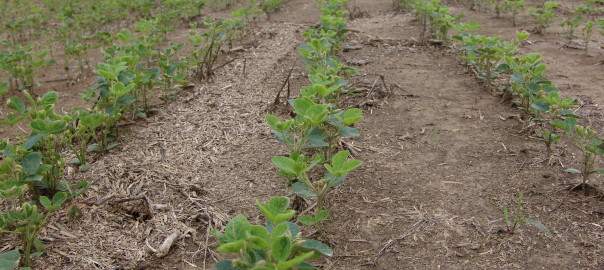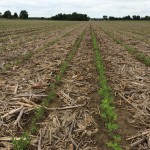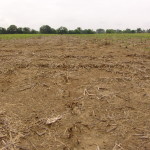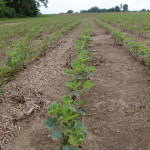Dicamba burndown residual causing soybean injury has been a very common call over the last several days. This injury started showing up just this week whether it occurred in a farmer’s field or my research. In many cases the dicamba injury is showing up despite having been applied as long as 21 days before planting. The level of injury ranges from some minor cupping to loss of stand.
One notable trend with this dicamba injury is that it has been much worse in fields with heavy residue. Fields that were corn last year or wheat and double crop soybean have shown the most injury. Fields that were in cotton last year are noticeably less impacted. Moreover, soybeans in fields with heavy residue where row cleaners were set more aggressive are also showing less injury (picture below). These really points to the cause of the dicamba hanging around so long as it was held up on the residue and then washed in with all the rain over the past couple weeks.
The question is should these fields be replanted? To answer this question, we have conducted a multiple tests over the years looking at dicamba application timings that get progressively closer to soybean planting. What we have found time and again is that though soybean seedlings can look very rough, as long as the stand is there, no yield loss occurs. Where we have seen yield loss is where significant stand loss has occurred. In our tests the injury where stand loss occurs is when 8 ozs/A or more of dicamba is applied within 14 days of planting.
About the time one can get back into the field you should be able to see if the stand is sufficient to keep. Plants living 2 weeks after the injury shows up should go on to yield fine. Often one will see where the apical meristem is stunted and the axillary buds have become the main stem, not unlike deer clipping the tops out. These plants should go on to yield fine. The loss of stand typically has shown up on field edges where the burndown was overlapped. These areas may need to be spot planted in some cases.





